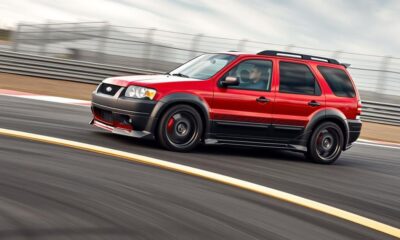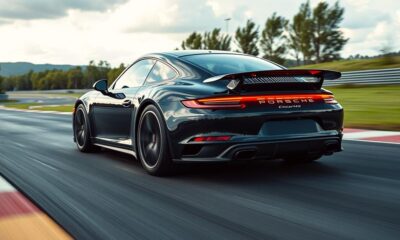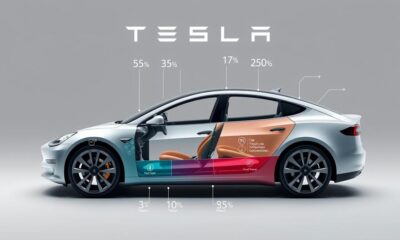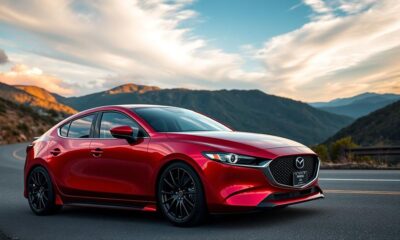BMW Tuning
Best BMW for Tuning: Which Models Offer the Most Potential?
The top BMW models for tuning promise incredible power gains, but which ones truly deliver the most potential? Discover the best options inside!

If you're looking for the best BMWs to tune, consider the 340i and M2. The 340i, with its B58 engine, can hit over 500 hp with modifications, while the M2's N55 engine allows for gains of 40-60 hp. The E90 335i is also a great option, known for its strong aftermarket support and performance upgrades. Plus, the M235i delivers a compact design and significant tuning potential. Each model offers unique advantages to cater to your tuning aspirations. Stick around to discover more about specific upgrades and community insights to enhance your tuning journey.
Key Takeaways
- The BMW 340i, with its B58 engine, can exceed 500 hp with tuning, making it a top choice for performance enthusiasts.
- The BMW M2, featuring the N55 engine, offers a well-balanced chassis and significant power gains through modifications, ideal for driving enjoyment.
- The E90 335i, powered by the reliable N54 engine, provides strong aftermarket support and excellent performance upgrade potential for tuners.
- The BMW M235i has a compact design and impressive tuning potential, reaching around 400 hp, appealing to turbocharged performance seekers.
- Each model offers distinct advantages in tuning, ensuring enthusiasts can find options that enhance driving dynamics and cater to their aspirations.
Top BMW Models for Tuning
When it comes to tuning, several BMW models stand out for their performance potential and aftermarket support.
The BMW 340i, with its B58 engine, is a powerhouse that can easily exceed 500 hp through an ECU tune and exhaust upgrades. This model not only delivers impressive tuning gains but also offers exceptional handling, making it a favorite among enthusiasts.
Another excellent choice is the BMW M2, equipped with the N55 engine. It starts at 365 hp and can gain an additional 40-60 hp with tuning modifications. The M2's well-balanced chassis complements its power, ensuring you enjoy every twist and turn.
Don't overlook the E90 335i, which features the beloved N54 engine. This model is a tuner's dream, producing 300 hp and boasting vast aftermarket support. With the right upgrades, you can greatly enhance its performance.
Lastly, the BMW M235i is another strong contender, producing 320 hp from its N55 engine. With tuning, it can reach around 400 hp, making it a popular choice for those seeking turbocharged engine thrills.
Each of these BMW models offers unique benefits, ensuring you'll find the perfect fit for your tuning aspirations.
Key Engine Specifications
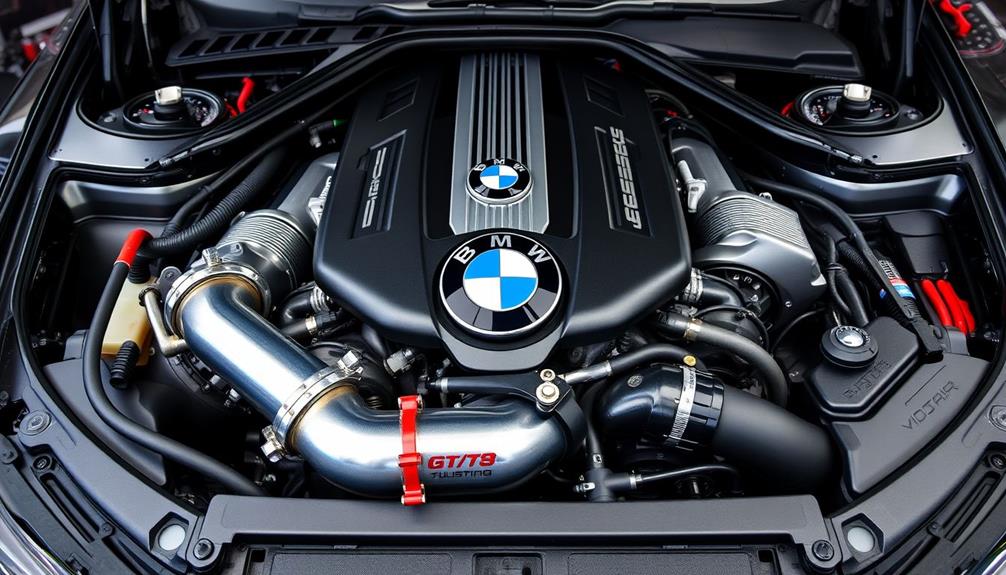
Understanding key engine specifications is essential for anyone looking to tune a BMW effectively. The BMW B58 engine, featured in models like the 340i, showcases impressive tuning potential, offering between 322-382 hp and the ability to exceed 500 hp with proper modifications. Its robust closed-deck design enhances reliability, making it a favorite among tuners.
The BMW N54 engine is another strong contender. Known for its reliability, it produces 302-335 hp and can handle increased boost pressures, which is why it's popular in the 335i and 535i models. You can expect notable performance gains with aftermarket tuning options.
The N55 engine, found in the M2, delivers 365 hp and 343 lb-ft of torque, with tuning potential allowing for a 40-60 hp increase through ECU remaps.
Additionally, the N57 engine in the 535d offers 309 hp and 465 lb-ft of torque, along with various aftermarket tuning options for enhanced performance.
Popular Aftermarket Modifications

After grasping the key engine specifications, it's time to explore the popular aftermarket modifications that can access your BMW's full potential.
These tweaks not only enhance performance but also align with the desires of car enthusiasts looking for that extra edge.
Here are some popular modifications to evaluate:
- ECU Flash Tune: For models like the BMW 340i (F30), this can offer a boost of 50-80 hp and 30-60 lb-ft of torque.
- Exhaust Upgrades: Installing a downpipe and removing the catalytic converter (where legal) greatly improves exhaust flow, especially in the BMW M2 (F87) and 535d (F10).
- Turbocharger Upgrades: Replacing the factory turbo on the BMW 535d (F10) can lead to considerable horsepower increases.
- Intake Systems: Aftermarket cold air intakes in models like the E90 335i enhance airflow, especially when paired with an ECU remap.
- Suspension Enhancements: Upgrades like Bilstein Damptronic systems can notably improve handling and ride quality, particularly in the BMW M2.
These aftermarket modifications help release your BMW's true performance potential and elevate your driving experience.
Tuning Community Insights

Within the thriving BMW tuning community, enthusiasts share a wealth of knowledge and experience that can greatly enhance your tuning journey. Engaging with forums and online groups can help you uncover valuable insights about performance upgrades specific to various BMW models.
You'll find extensive resources, such as guides and tutorials, that simplify the learning process for newcomers looking to make informed modifications.
Participating in tuning events and meetups not only fosters camaraderie but also allows you to connect with like-minded individuals who share your passion.
Many members emphasize the importance of professional tuning to guarantee reliability and peak performance from your BMW engines. They often recommend specialized tuning shops and technicians who can provide expert guidance tailored to your vehicle's needs.
Cost Considerations for Tuning

Tuning a BMW often comes with a range of costs that can catch you off guard if you're not prepared.
Understanding the cost considerations for tuning is essential to guarantee you make informed decisions.
Here's a breakdown of what to expect:
- Entry-Level Models: Tuning something like the E36 328i averages around $3,341, making it budget-friendly.
- Performance Upgrades: ECU remaps for models like the BMW 340i can set you back between $500 to $1,500, but can boost horsepower by 50-80 hp.
- Aftermarket Parts: For popular models like the M2, expect to pay $1,000 to $5,000 for enhancements like suspension and exhaust systems.
- DIY Modifications: If you're handy, many enthusiasts have successfully completed upgrades for under $1,000, utilizing community resources.
- Resale Value: Tuning can positively impact the resale value of tuned BMWs, especially in enthusiast markets, potentially offsetting initial investments.
Frequently Asked Questions
Which BMW Is Best for Modding?
If you're looking for a BMW to mod, consider the 340i or E90 335i. Both offer excellent performance gains through upgrades, and their strong aftermarket support makes enhancing their power and handling easier than ever.
What Is the Fastest Tuned Bmw?
The fastest tuned BMW is the M5 (F90). With proper ECU tuning and performance modifications, you can push it over 700 hp, making it one of the quickest sedans you'll ever drive.
Which BMW Will Increase in Value?
If you're looking for a BMW that'll increase in value, consider the E30 325i or E46 M3. Their classic status and strong enthusiast demand make them potential appreciating assets in the automotive market.
Are BMWS Good to Tune?
Did you know that tuning a BMW can boost horsepower by 40-80 hp? Yes, BMWs are great to tune, especially turbocharged models, offering robust aftermarket support and reliable performance enhancements that elevate your driving experience.
Conclusion
In the world of BMW tuning, you've got a treasure trove of options. From the powerful M series to the versatile 3 Series, each model offers unique potential for performance upgrades. As you immerse yourself in the tuning community, remember that with the right modifications, your BMW can transform from a sleek ride to a roaring beast on the road. So, gear up and release the full power of your machine—it's time to make your BMW truly your own!
Alex is our go-to expert on performance tuning, with over a decade of experience in the automotive industry. His deep understanding of engine dynamics, exhaust systems, and performance software allows him to break down complex concepts into easy-to-follow guides. Whether you’re looking to boost horsepower or fine-tune your vehicle’s responsiveness, Alex’s insights will help you achieve peak performance.
BMW Tuning
BMW 328I 2007 Tuning: Get More Power From Your N52 Engine
Discover crucial tuning tips for your 2007 BMW 328i’s N52 engine that can unleash incredible power—find out how to maximize your performance!

To get more power from your 2007 BMW 328i's N52 engine, start with some key modifications. Installing a high-flow cold air intake can add around 12 WHP, while upgrading to a three-stage intake manifold may boost you by 25 WHP. Enhancing the exhaust system through headers and a well-chosen exhaust can reveal significant gains too. For a big power jump, consider supercharging, which can increase horsepower by 80-100 WHP. Pair these upgrades with engine management tuning for peak results. Stick around to uncover even more tuning tips and tricks to elevate your ride further.
Key Takeaways
- Upgrade to a three-stage intake manifold for a significant boost of about 25 WHP and improved high RPM performance.
- Install a cold air intake system, like the aFe Stage 2 Si, to gain approximately 12 WHP and 15 WTQ.
- Consider high-flow aftermarket headers to enhance exhaust flow and achieve gains of over 16 WHP and 18 TQ.
- Combine intake, exhaust, and tuning modifications for total power increases of up to 70 HP for optimal performance.
- Ensure compliance with local emissions laws when making modifications to avoid legal issues and fines.
Overview of N52 Engine Tuning
Tuning the N52 engine in your 2007 BMW 328i can greatly enhance its performance and driving experience. This naturally aspirated inline-six engine has plenty of potential for power mods that can transform your ride.
Simple upgrades like high-flow intakes and improved exhaust systems can yield an impressive 10-20 WHP when coupled with effective tuning.
One of the most impactful modifications you can make is upgrading to a three-stage intake manifold. This change alone can deliver an additional 25 WHP, especially noticeable in higher RPM ranges where performance really counts.
You'll feel the difference as the engine breathes better, translating into quicker acceleration and improved overall responsiveness.
Don't overlook engine management tuning options, such as the BMS Power Box. This device can increase your power by another 8-10 WHP, all while enhancing throttle response without making irreversible changes to your ECU.
When you combine these modifications—intake, exhaust, and tuning—you could see total power increases of up to 70 HP.
Essential Intake Modifications
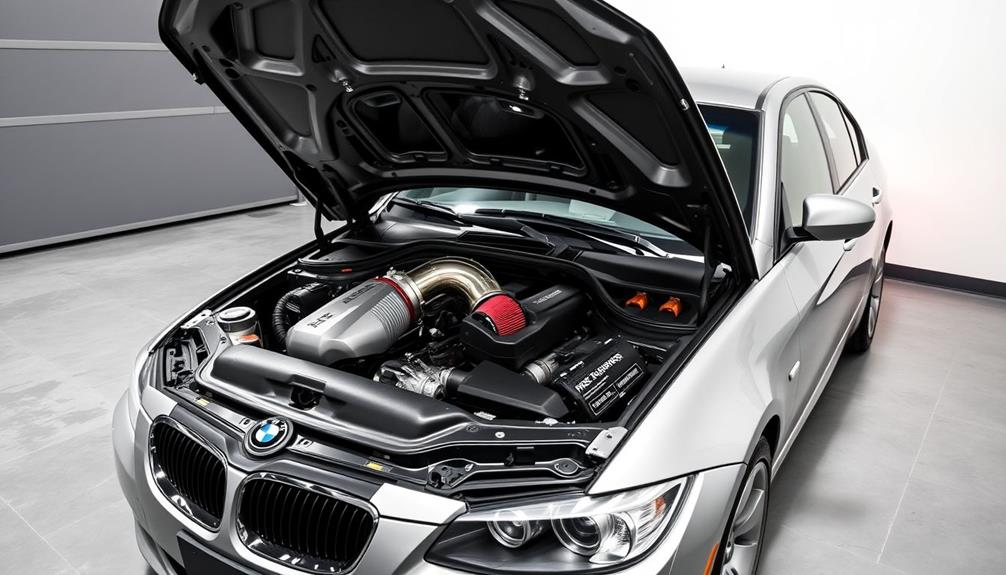
Maximizing your BMW 328i's performance starts with essential intake modifications that can greatly boost horsepower and torque. One of the most effective upgrades you can make is installing a cold air intake system, like the aFe Stage 2 Si Intake. This high-flow system can add approximately 12whp and 15wtq by improving airflow to your engine, letting it breathe better.
Another effective modification is removing the charcoal filter, which is a cost-free way to enhance intake efficiency, although opinions on its effectiveness vary. Pair this with a silicone intake boot, and you could see an additional gain of up to 4whp, or even 10whp when combined with other upgrades.
For serious performance enthusiasts, consider the Three-Stage Intake Manifold from ECS Tuning. When tuned correctly, this upgrade can yield an estimated 25whp gain, considerably improving your engine's performance across the RPM range.
Upgrading the Exhaust System

When you're looking to upgrade your BMW 328I's exhaust system, you've got several options that can enhance performance and sound.
You can achieve noticeable power gains, but it's essential to keep legal considerations and compliance in mind to avoid any issues.
Let's explore the different systems available and how they can impact your ride.
Exhaust System Options
Upgrading the exhaust system on your 2007 BMW 328i can greatly enhance its performance and sound. With various exhaust system options available, you can choose one that fits your power goals and budget. For example, a single 3-inch exhaust system boosts mid to high rev performance, while a dual 2.5-inch exhaust is better for lower to midrange power gains.
Here's a quick comparison of some popular options:
| Exhaust Option | Estimated Cost |
|---|---|
| Custom Exhaust Setup | Starting at $300 |
| Brand-Name Exhaust | Up to $2,000 |
| High-Flow Aftermarket Headers | Varies, generally higher |
| Modular Exhaust System | Flexible pricing |
Additionally, removing the resonator and secondary cats improves exhaust flow, potentially increasing horsepower by 5 WHP or more. Installing high-flow aftermarket headers, like aFe Power Catted Headers, can yield gains of over 16 WHP and enhance overall exhaust efficiency. Modular exhaust systems also allow for easy modifications, letting you adjust sound and performance without permanent changes. So, consider these exhaust system options to elevate your BMW's performance!
Performance Gains Achievable
With a well-chosen exhaust system, you can reveal significant performance gains in your 2007 BMW 328i. Upgrading to a single 3-inch exhaust system is ideal for enhancing mid to high rev ranges, while dual 2.5-inch setups excel in lower to midrange performance.
Depending on your budget, exhaust modifications can range from about $300 for custom setups to nearly $2,000 for well-known brands.
You can expect around 5 WHP gains from these modifications, though some configurations may not yield noticeable increases. Removing the resonator not only improves sound quality but also enhances performance, while eliminating secondary cats can boost overall exhaust flow.
Modular exhaust systems provide flexibility, making it easy to adjust and tailor your setup without permanent changes. This way, you can experiment and optimize your power delivery as desired.
Legal Considerations and Compliance
Steering through the legal landscape surrounding exhaust modifications for your BMW 328i is vital to avoid potential pitfalls. When upgrading your exhaust system, always check your local emissions laws, as some modifications can render your vehicle non-compliant.
Removing or altering catalytic converters is often illegal and can lead to hefty fines if authorities catch you. It's important to consult local regulations before making any changes.
If you live in California or similar areas with strict emissions standards, verify that any aftermarket exhaust systems you consider are CARB (California Air Resources Board) approved.
Not only does compliance matter, but some upgrades may also require additional tuning to help your vehicle's ECU adapt to new airflow and emissions characteristics.
While you might experience significant performance gains from an upgraded exhaust, remember that non-compliance can result in registration issues, fines, or even vehicle impoundment.
Prioritize legal considerations and compatibility with emissions laws to enjoy your tuning experience without unwanted consequences. Always stay informed and make modifications that keep you within the legal framework.
Performance Exhaust Options

When it comes to enhancing your BMW 328I's performance, upgrading the exhaust system is a key step.
Consider the benefits of header replacements and how they can boost power while improving sound quality.
You'll find that each modification can greatly impact your car's performance, so let's explore your options.
Exhaust System Upgrades
If you're looking to boost the performance of your 2007 BMW 328i, upgrading the exhaust system is one of the most effective strategies.
By opting for exhaust system upgrades, you can greatly enhance your car's power and sound. A single 3-inch exhaust system is ideal for improving mid to high rev performance, while a dual 2.5-inch setup is better for lower to midrange power.
Aftermarket headers, like the aFe Power Catted Headers, can provide impressive gains of over 16 WHP and 18 WTQ by optimizing exhaust flow compared to the stock headers.
You might also consider removing the resonator and secondary cats, which can boost exhaust flow and add around 5 WHP, depending on your specific setup.
When it comes to costs, custom exhaust modifications can start around $300, while branded options may reach nearly $2,000.
Modular exhaust systems offer flexibility, allowing you to make easy upgrades without permanent changes, so you can fine-tune your sound and performance as needed.
With the right upgrades, you'll enjoy a more exhilarating driving experience in your BMW 328i.
Header Replacement Benefits
Upgrading the exhaust system sets the stage for even more significant enhancements, particularly through header replacement. By swapping out your factory headers for high-flow aftermarket options, you can achieve impressive power gains—over 16 wheel horsepower (whp) and 18 foot-pounds of torque (tq) for the N52 engine. This upgrade improves exhaust flow by reducing restrictions present in OEM headers, which enhances overall engine performance.
If you're focused on maximizing power output, especially for racecar builds, upgraded headers are a must. They facilitate better exhaust scavenging, allowing your engine to breathe more freely and perform at its peak.
However, it's essential to verify local regulations regarding catalytic converter modifications before proceeding with header replacement, as some headers may not comply with emissions standards.
For peak performance improvements, consider pairing your high-flow headers with complementary modifications, like upgraded exhaust systems and intakes. This combination will guarantee you're truly reaping the header replacement benefits while maximizing the potential of your BMW 328I.
Sound and Performance Impact
While many enthusiasts focus on performance gains, the sound produced by your exhaust system can greatly enhance the driving experience. Upgrading to a single 3-inch exhaust system is an excellent choice if you're looking to boost mid to high rev performance. On the other hand, a dual 2.5-inch setup is ideal for lower to midrange power.
With aftermarket exhaust modifications, you can typically achieve power gains of around 5 WHP, though results may vary based on your specific setup and vehicle condition.
Removing the resonator and secondary catalytic converters can markedly improve exhaust flow, resulting in a more aggressive sound and slight performance enhancements. High-quality options like the Remus Sport Exhaust or Active Autowerke Gen 2 Exhaust are popular among BMW 328i owners for their combination of enhanced sound and performance.
Additionally, consider modular exhaust systems, which let you experiment with different setups without making permanent alterations. This flexibility allows you to tailor the sound and performance characteristics to your preferences, ensuring you get the most out of your tuning experience.
Embrace the transformation and enjoy the harmonious blend of sound and performance that these modifications offer!
Intake Manifold Improvements

Many enthusiasts find that upgrading to the N52B30H0 manifold from the E90 330i can markedly enhance their BMW 328i's performance.
This three-stage intake manifold is designed to optimize airflow and power distribution across the RPM range, offering a significant improvement over single-stage models. With proper tuning, you could see a potential output of 250hp to 260hp, making this modification one of the most popular for N52 engines.
One of the standout features of this manifold is its electronic DISA valves.
These valves intelligently direct air to the cylinders that need it most, ensuring efficient engine operation and maximizing power output.
When you install the three-stage intake manifold, you can expect a power gain of approximately 25 WHP, especially when paired with a suitable tune.
Supercharging the N52 Engine

Supercharging the N52 engine can dramatically transform your BMW 328i's performance, delivering impressive power gains that typically range from 80 to 100 wheel horsepower (whp).
By installing a quality supercharger kit, such as those from ESS Tuning, you can enhance your vehicle's capabilities considerably. These kits are specifically designed for the N51/N52 engines and include all the required components for a straightforward installation.
However, keep in mind that installing a supercharger often necessitates additional tuning to optimize performance and guarantee that your engine remains reliable. This tuning process is vital to maximize the benefits of supercharging the N52 engine while preventing potential issues.
Before diving into this upgrade, it's essential to verify local regulations regarding emissions and modifications. Supercharging can affect the legality of your vehicle on public roads, so it's best to do your research.
With a boosted setup, your N52 engine can compete with higher-tier models like the 335i, resulting in exhilarating driving dynamics and a more satisfying experience behind the wheel.
Embrace the power gains and elevate your BMW 328i to new heights!
Expert Recommendations for Tuning

When tuning your 2007 BMW 328i, consider a multi-faceted approach to maximize performance gains.
Start by upgrading to a three-stage intake manifold, which can yield about 25 WHP when combined with proper tuning for your N52 engine.
Next, installing a high-performance intake like the aFe Stage 2 Si can add 12 WHP and 15 WTQ, greatly enhancing overall engine performance.
Don't overlook the importance of your exhaust system.
Aftermarket headers, especially catless options, can provide a power increase of 18-20 WHP, with even greater gains possible with the right tuning adjustments.
Additionally, consider engine management tuning using a BMS Power Box or similar device, which can give you an easy plug-and-play solution for boosting throttle response and adding 8-10 WHP.
Frequently Asked Questions
How Much Power Can You Get Out of an N52 Engine?
You can extract impressive power from an N52 engine, achieving around 270-300 horsepower with full bolt-on modifications. With proper tuning and upgrades, you could see gains of up to 100 horsepower or more.
How Much Horsepower Does a N52 Make?
The N52 engine produces around 230 horsepower and 200 lb-ft of torque in its factory form. With tuning and modifications, you can boost that output considerably, reaching up to 300 horsepower depending on upgrades.
How Much HP Can You Get Out of a 328i?
Imagine releasing a wild stallion; with the right modifications, you can boost your 328i's horsepower to between 270 and 300hp. A few tweaks, and you'll feel that exhilarating rush on every drive!
How Much Horsepower Does a Tuned BMW 328I Have?
A tuned BMW 328i can achieve impressive horsepower gains, reaching up to 270hp or more. By upgrading components like the intake and exhaust, you're releasing significant performance and transforming your driving experience.
Conclusion
In summary, tuning your 2007 BMW 328i's N52 engine can transform your driving experience. Whether you choose to enhance intake, upgrade the exhaust, or supercharge for maximum power, each modification amplifies performance. Embrace the thrill of improved acceleration, relish the roar of a robust exhaust, and enjoy the satisfaction of a finely-tuned machine. With expert recommendations guiding you, you're not just enhancing your car; you're elevating your passion for driving. Get ready to release the power!
Alex is our go-to expert on performance tuning, with over a decade of experience in the automotive industry. His deep understanding of engine dynamics, exhaust systems, and performance software allows him to break down complex concepts into easy-to-follow guides. Whether you’re looking to boost horsepower or fine-tune your vehicle’s responsiveness, Alex’s insights will help you achieve peak performance.
BMW Tuning
Best BMW Engine for Tuning: Discover the Top Picks for Power
Get ready to unleash your BMW’s true potential as we reveal the best engines for tuning—find out which one reigns supreme!

If you're looking to boost your BMW's power, the B58 and N54 engines are top contenders. The B58, found in models like the 340i and M240i, offers impressive tuning potential with strong performance and a robust design. The N54, popular for its reliability, can handle incredible upgrades, pushing power levels up to 700 HP on stock internals. Another excellent choice is the S55 engine from the M3 and M4, known for its tuning flexibility. You can maximize your vehicle's performance by following safe tuning practices. Keep on exploring to discover more valuable insights for tuning success!
Key Takeaways
- The B58 engine, found in models like the 340i, offers robust performance with tuning potential up to 400 HP.
- N54 engines are highly favored among tuners, capable of achieving up to 700 HP on stock internals.
- S55 engines, featured in the M3 and M4, provide strong tuning potential with outputs reaching 500 HP.
- The compact B48 engine can be tuned for approximately 300 HP, making it a versatile option for lighter models.
- S63 twin-turbo V8 engines in the M5 and M8 are ideal for aggressive tuning, reaching up to 635 HP.
Characteristics of Tuning Engines
When you plunge into the world of tuning engines, you'll quickly notice several key characteristics that set the best options apart. One standout is the BMW B58 engine, a turbocharged powerhouse that offers impressive tuning potential. Its design allows for increased boost pressures, greatly enhancing power output without compromising reliability.
An essential factor in successful engine tuning is making sure you have a well-maintained engine. Healthy engines can handle the stresses of modifications much better, which is vital when you're pushing for higher performance.
The durability of BMW engines, like the N54 and S55, means they can support extensive modifications while maintaining OEM reliability.
Additionally, the extensive aftermarket support available for BMW engines is another characteristic to take into account. You'll find a wide range of tuning kits and upgrades that make it easier to customize your ride.
Modular designs, particularly in BMW's B-series family, enhance compatibility with various components, opening up even more tuning options.
Top BMW Engines for Tuning

For enthusiasts looking to maximize performance, several BMW engines stand out as top contenders for tuning. The BMW B58 engine, featured in models like the 340i and M240i, offers a robust closed deck design and delivers between 322-382 HP, making it an excellent platform for significant power gains.
Then there's the N54 engine, capable of handling up to 700 HP on stock internals, which is a favorite among tuners due to its high power potential found in popular models like the 335i and 135i.
If you're into M models, the S55 engine found in the M3 and M4 is a powerhouse, producing between 425-503 HP and offering strong tuning potential through remaps and turbo upgrades.
For those who prefer a compact option, the B48 engine in the 2 Series and 3 Series can be tuned to produce up to 300 HP, making it a versatile choice for performance enthusiasts.
Finally, the S63 twin-turbo V8 engine in the M5 and M8 can achieve outputs up to 635 HP, perfect for aggressive tuning modifications that deliver extra power.
These reliable BMW engines are sure to elevate your driving experience.
Safe Tuning Practices

When tuning your BMW, it's essential to pay close attention to ECU parameters to avoid any potential engine damage.
Working with an expert technician guarantees that adjustments are made safely and effectively, protecting your investment.
Always prioritize professional guidance to keep your tuning experience both enjoyable and reliable.
ECU Tuning Considerations
With the right approach, ECU tuning can release your BMW's full potential while keeping your engine safe and reliable. To achieve ideal engine performance, consider these essential ECU tuning considerations:
| Consideration | Importance |
|---|---|
| Reputable Tuning Services | Prevents engine damage from improper adjustments |
| Regular Performance Monitoring | Identifies irregularities post-tuning |
| High-Octane Fuels | Enhances performance and prevents knock |
| Turbocharged Considerations | Adjusts boost levels for increased power |
| Safe Tuning Practices | Guarantees lower operating temperatures and longevity |
Utilizing high-octane fuels, like 93+ in the US or 98+ in Europe, is crucial for turbocharged setups. These fuels help maximize performance and reduce the risk of detonation. When you opt for professional tuning services, you gain access to expert knowledge that guarantees your engine operates within safe parameters. Implementing safe tuning practices, such as remote tuning sessions with experienced technicians, allows for precise adjustments while safeguarding your engine's longevity. By following these guidelines, you can enjoy an exhilarating driving experience without compromising reliability.
Expert Technician Importance
Engaging an expert technician for ECU tuning is crucial to safeguard your BMW's performance and reliability. Improper adjustments can lead to severe engine damage or reduced performance, making it essential to rely on a qualified mechanic.
Expert tuners use sophisticated software and diagnostic tools to guarantee precise engine tuning that maximizes engine output while maintaining reliability.
Remote tuning services offered by professionals provide a convenient way to make safe adjustments without needing a physical visit. This guarantees that you receive expert oversight throughout the tuning process.
Additionally, regular monitoring and performance tracking post-tuning by qualified technicians help identify any irregularities, optimizing your tuning further.
An experienced technician can tailor modifications based on your individual driving habits and specific vehicle conditions, enhancing both performance and engine longevity.
By investing in reliable tuning practices, you not only boost your BMW's capabilities but also protect its overall health.
Don't compromise on your vehicle's integrity—trust an expert technician for all your tuning needs. This way, you can enjoy the thrill of enhanced performance while guaranteeing your engine remains in peak condition for years to come.
Post-Tuning Maintenance Tips

After tuning your BMW, using high-octane fuel is essential to guarantee peak performance and prevent engine knock.
You should also commit to regular oil changes and keep an eye on your engine's performance through routine monitoring.
These steps not only enhance your driving experience but also help prolong the life of your tuned engine.
Quality Fuel Usage
To maximize your BMW's performance after tuning, using high-octane fuel is vital. Opt for 93+ octane in the US or 98+ in Europe to guarantee your tuned engine runs smoothly and efficiently. Quality fuels are significant for peak combustion efficiency, especially for tuned engines that operate under increased stress and higher performance parameters.
Regularly using premium fuel enhances throttle response, providing a noticeable improvement in engine performance. You'll enjoy a smoother driving experience, which is particularly important for maximizing the benefits of your tuning modifications.
Additionally, high-quality fuels help reduce the risk of carbon buildup and other deposits that can arise from lower-grade fuels, guaranteeing the longevity of your engine components.
Consistent use of the recommended fuel types not only contributes to better fuel efficiency but also helps you achieve the desired power gains from your tuning efforts. By prioritizing high-octane and quality fuels, you're investing in the performance and durability of your BMW, allowing you to enjoy every drive to the fullest.
Regular Oil Changes
Maintaining ideal engine health goes hand in hand with regular oil changes, especially after tuning your BMW. After considerable modifications, your tuned engine faces heightened performance demands, making it vital to keep up with regular maintenance.
Aim to change your oil every 5,000 to 7,500 miles, ensuring that contaminants don't compromise your engine integrity.
Using high-quality synthetic oils is key to peak performance and protection. These oils withstand the increased stress and temperature variations that tuned engines often encounter.
Regular oil changes can help mitigate issues like increased oil consumption or breakdown rates, which are common in performance-tuned setups.
Additionally, keeping a close eye on your oil levels and condition is essential. If you notice any changes, don't hesitate to check your oil more frequently.
Following manufacturer recommendations while considering the unique needs of your tuned engine will greatly extend its lifespan and maintain its performance.
Performance Monitoring Routine
Establishing a performance monitoring routine is essential for keeping your tuned BMW running at its best. Regularly monitoring engine performance with diagnostic tools helps you track any changes in power output and efficiency after tuning adjustments. Here's a simple routine to follow for peak engine health:
| Task | Frequency |
|---|---|
| Diagnostic Tool Check | Every 1,000 miles |
| Routine Inspection | Every 5,000-7,500 miles |
| Oil Change | Every 7,500 miles |
| Driving Habit Evaluation | Every 1,500 miles |
Be certain to use high-octane fuels (93+ in the US, 98+ in Europe) to maximize engine performance and prevent knocking after modifications. Maintaining a consistent oil change schedule with high-quality synthetic oils protects engine components and enhances longevity. Additionally, engaging in frequent driving habit evaluations guarantees your driving style complements the tuned engine's performance characteristics. By following these tips, you'll keep your BMW thriving and enjoyable to drive. Remember, proactive performance monitoring is key to long-term engine health!
Best Tuning Practices

When it comes to tuning your BMW, understanding the best practices can make all the difference in achieving ideal performance. Start by researching and selecting BMW engines for tuning, like the B58 or N54. These engines have a robust design and significant tuning potential, allowing for impressive power gains with the right modifications.
Utilize professional tuning services for ECU remapping and performance enhancements. This guarantees safe and effective modifications, minimizing the risks of engine damage or reliability issues.
After tuning, always monitor engine performance through regular diagnostics and dyno testing to track improvements and identify any irregularities.
Using high-octane fuels—93+ in the US and 98+ in Europe—is essential post-tuning. This choice optimizes engine performance and helps prevent knock, which can hinder power and longevity.
Don't forget to tap into BMW enthusiast communities and forums. Engaging with fellow enthusiasts can provide valuable insights and successful tuning strategies tailored to different engine models.
Engaging With the Community
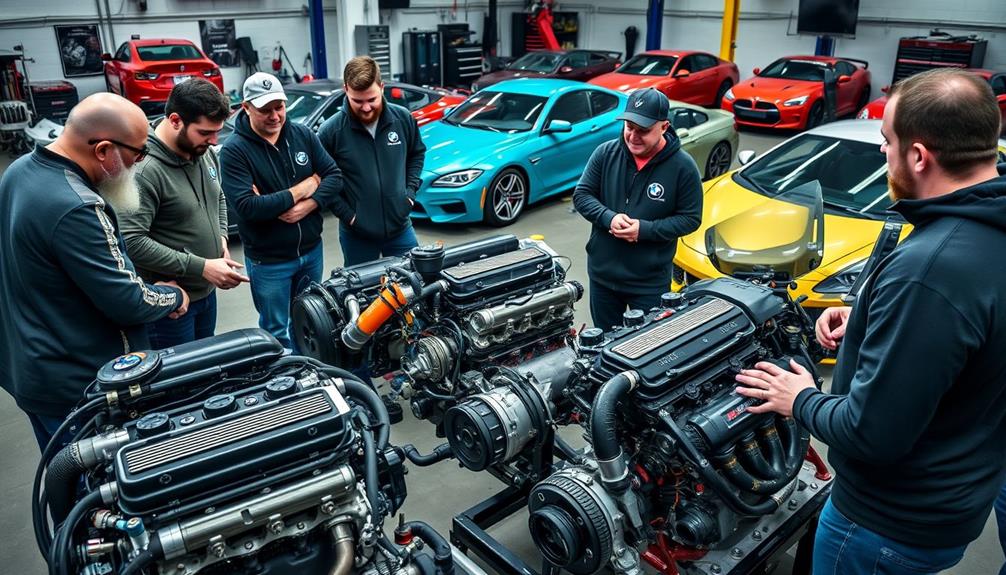
Connecting with the BMW community can greatly enhance your tuning journey. Engaging with the community through forums and social media platforms opens up a treasure trove of tuning experiences and recommendations for engine modifications.
You'll find car enthusiasts enthusiastic to share their successes and challenges, creating an invaluable collaborative environment where you can ask questions and exchange practical tips.
Participating in community events like car meets and track days allows you to dive deeper into discussions about performance upgrades while showcasing your own tuned BMW.
These gatherings not only foster camaraderie but also provide a space to learn from others' experiences.
Online resources often host polls or surveys regarding preferred tuning methods, helping you identify trending practices among fellow enthusiasts.
By joining local or national BMW clubs, you can connect with experienced tuners, gaining access to exclusive events and workshops focused on engine tuning and performance enhancements.
In short, actively engaging with the community won't only broaden your knowledge but also enrich your journey into the world of BMW tuning.
Embrace the connections, share your experiences, and watch your tuning skills flourish!
Frequently Asked Questions
Which BMW Engine Is Good for Tuning?
If you're looking for a BMW engine to tune, consider the B58 for its robust design, or the N54 for impressive power potential. The S55 also offers excellent tuning capabilities, especially in M models.
What BMW Engine Can Handle the Most Power?
If you're dreaming of turning your BMW into a power monster, the S63 V8's your best bet. With proper tweaks, it can handle up to 800 hp—perfect for those who crave excessive horsepower.
Which BMW Is Most Tunable?
If you're looking for the most tunable BMW, the N54 engine's robust internals make it a top choice. With proper upgrades, it can easily handle impressive power levels, appealing to enthusiasts seeking performance.
What's the Best BMW Engine Ever Made?
If you're dreaming of the ultimate driving experience, the BMW B58 engine stands out as the best ever made. Its smoothness and tuning potential make it a powerhouse, ready to take your ride to incredible heights.
Conclusion
So, you thought you could just drive your BMW without a little extra horsepower? Think again! With the right engine and tuning practices, you can release a beast that'll leave your friends in awe. Just remember, tuning isn't all about raw power—it's about balance and safety too. So, strap in, follow those maintenance tips, and immerse yourself in the tuning community. Who knew making your car faster could be this much fun—and a little ironic, right?
Alex is our go-to expert on performance tuning, with over a decade of experience in the automotive industry. His deep understanding of engine dynamics, exhaust systems, and performance software allows him to break down complex concepts into easy-to-follow guides. Whether you’re looking to boost horsepower or fine-tune your vehicle’s responsiveness, Alex’s insights will help you achieve peak performance.
BMW Tuning
BMW E46 Tuning for Drift: How to Set Up Your BMW for the Track
Prepare your BMW E46 for the ultimate drift experience with these essential tuning tips—discover how to unleash its full potential on the track.

To set up your BMW E46 for drift, start with essential upgrades. Install coilovers for improved handling and polybushes to enhance responsiveness. Reinforce the subframe with steel plates to prevent cracking during intense cornering. Upgrade to a welded or limited-slip differential for better traction. Don't forget the cooling system; a lower temperature thermostat and auxiliary fans help manage heat. You can lighten the car by removing non-essential components and opting for lightweight parts. Add racing seats and harnesses for driver safety and support. There's even more to explore to maximize your E46's drift potential.
Key Takeaways
- Upgrade to HSD Mono Pro coilovers and polybushes to enhance handling and responsiveness on the track.
- Reinforce the subframe and chassis with steel plates and bracing to withstand high-speed cornering forces.
- Install a limited-slip differential for improved traction and better control during drifting maneuvers.
- Optimize cooling with a lower temperature thermostat and auxiliary fans to prevent overheating during extended track sessions.
- Remove non-essential components and replace heavy parts with lightweight alternatives to improve overall vehicle agility.
Car Selection and Initial Thoughts
When it comes to choosing a drift car, the BMW E46 330 stands out as a top contender, balancing performance with affordability. You'll find that many enthusiasts purchase this model from friends or fellow car lovers, making it an accessible choice for drifting.
Shifting from an E30 to an E46 offers a more modern driving experience while still delivering that engaging BMW handling you crave.
As you start your journey, focus your initial modifications on enhancing the car's handling and reliability. Don't just follow a budget; prioritize upgrades that make a real difference. Common initial upgrades include suspension enhancements like polybushes and coilovers, which can greatly improve your E46's performance on the track.
However, be mindful of potential structural issues, such as boot floor weaknesses. These problems can affect your car's durability during drifting activities, so consider reinforcements to guarantee it can handle the strain.
Essential Suspension Upgrades

With the foundation set for your E46, it's time to turn your attention to suspension upgrades that can truly elevate your drifting experience. Start with HSD Mono Pro coilovers paired with track pack springs to greatly improve handling and adjust ride height for ideal weight distribution during drifts. This setup allows you to fine-tune your car's balance, which is essential for maintaining control.
Next, consider installing polybushes throughout the suspension system. These enhance responsiveness and reduce flex, giving you a more direct connection to the road.
Additionally, adding Hard Race camber arms lets you precisely adjust camber angles, improving tire contact during cornering, which is critical for grip while drifting.
Don't overlook subframe reinforcement; using 2mm 304 steel plates will address the common weaknesses found in E46 models, ensuring your chassis can withstand the rigors of track use.
Finally, completing a professional alignment after these suspension upgrades is important. It maximizes tire performance and helps you achieve the desired handling characteristics for drifting.
Structural Reinforcements Needed

To guarantee your BMW E46 can withstand the intense demands of drifting, structural reinforcements are a must. The E46 chassis is known for boot floor issues, making the installation of subframe plates critical for durability during track use.
Opt for subframe plates made of 2mm 304 steel, which you can easily find on platforms like eBay, offering a cost-effective solution compared to pricier alternatives.
Reinforcing the rear subframe is essential to prevent cracking and ascertain reliability under the stress of high-speed cornering and drifting. You should also consider additional structural reinforcements, such as welded chassis bracing and roll cages, which can greatly enhance your car's rigidity and safety during competitive racing.
Regular inspection and maintenance of these structural components will help you identify potential weaknesses early, guaranteeing your E46 remains track-ready.
Drivetrain Enhancements

When tuning your BMW E46 for drifting, focusing on drivetrain enhancements is vital for ideal performance.
Upgrading differentials, strengthening the transmission, and modifying the driveshaft can considerably improve your car's responsiveness and stability on the track.
Let's explore the best options for each of these important components.
Differential Upgrades and Options
Upgrading your differential is vital for maximizing your BMW E46's drift performance. One popular option is the welded differential, such as a 3.07 ratio, which locks the rear wheels together for improved traction and control during drifting. If you're looking for reliability, the stock 2.93 differential can serve as a backup while you explore higher performance alternatives like the auto version's 3.38 ratio for increased torque.
In addition, consider installing a reinforced differential cover to prevent flex and potential damage during aggressive driving. Regular maintenance and inspection of your differential fluid is essential to guarantee peak performance and longevity, especially after heavy track use.
Aftermarket differentials, like a limited-slip differential (LSD), can greatly enhance cornering ability and power delivery to the wheels during drift events.
| Differential Type | Benefits |
|---|---|
| Welded Differential | Increased traction and control |
| Limited-Slip Differential | Improved cornering and power delivery |
| Stock 2.93 Differential | Backup reliability |
| Reinforced Differential Cover | Prevents flex and damage |
Choose the right differential upgrade to get the most out of your drifting experience!
Transmission Strengthening Techniques
How can you guarantee your BMW E46's transmission keeps up with the demands of drifting? Start by upgrading to a stronger clutch. A single or dual disc setup enhances torque handling and boosts responsiveness during those high-stress drifts.
Next, consider installing a lightweight flywheel. This reduces rotational mass, enabling quicker revs and improving throttle response—vital for mastering drift control.
To bolster drivetrain stability under aggressive driving, reinforce your transmission mounts with solid or polyurethane options. This minimizes flex, allowing your transmission to handle the power more effectively.
A short-shift kit is another must-have. It improves gear change speed and precision, helping you maintain momentum during those significant moments on the track.
Lastly, don't forget about the importance of a transmission cooler. It regulates temperatures during extended drifting sessions, preventing overheating and ensuring consistent performance.
Driveshaft Considerations and Modifications
A well-optimized driveshaft is fundamental for enhancing your BMW E46's drifting performance. Upgrading to a lightweight aluminum driveshaft can greatly reduce rotational mass, leading to improved throttle response and overall acceleration in drift events.
It's essential to guarantee proper alignment and balance of the driveshaft to prevent vibrations and potential damage to the drivetrain, especially during high-stress situations.
Consider switching to a one-piece driveshaft instead of a two-piece. This modification increases rigidity and reduces flex, which enhances power transfer to the rear wheels, making your drifts more controlled and responsive.
Don't forget to regularly inspect the U-joints and carrier bearings for wear, as these components play a critical role in maintaining driveline integrity during aggressive driving.
For added safety, implement a reinforced driveshaft loop. This precaution can prevent damage to your vehicle and minimize the risk of injury in the event of a driveshaft failure.
Cooling System Modifications

Often overlooked, cooling system modifications are essential for enhancing your BMW E46's performance during drifting. To keep your engine cool under pressure, consider installing a lower temperature thermostat. This change greatly boosts cooling efficiency, preventing overheating during those extended sessions. Upgrading to a Stewart water pump can further improve reliability and performance, especially when you're pushing your car to its limits.
Drilling a 1/4 inch hole in the thermostat helps enhance coolant flow, ensuring the engine stays at ideal temperatures. Additionally, using Redline Water Wetter in your coolant mixture can improve heat transfer and lower coolant temperatures, critical for maintaining performance during intense drifting.
Lastly, strengthening your auxiliary fans and wiring them to an on/off switch gives you better control over cooling. You can maximize airflow when it's needed most. Here's a quick summary of these modifications:
| Modification | Benefits |
|---|---|
| Lower Temperature Thermostat | Prevents overheating |
| Stewart Water Pump | Superior performance and reliability |
| Drilled Thermostat | Improves coolant flow |
| Auxiliary Fans | Enhanced airflow control |
With these upgrades, your E46 will be more prepared to tackle the track.
Improving Airflow Efficiency

To enhance your BMW E46's drifting performance, improving airflow efficiency is essential. Start by removing the A/C condenser; this can considerably boost airflow to the radiator, keeping temperatures in check during those intense drifting sessions.
Next, consider installing hood vents or risers. These modifications will allow for effective heat dissipation and lower under-hood temperatures, ultimately improving your engine's cooling efficiency.
Don't overlook the large plastic snorkel that connects the bumper to the radiator. Eliminating it promotes direct airflow, maximizing cooling potential, especially under track conditions.
To manage airflow effectively during longer runs, high-performance auxiliary fans that you can operate via an on/off switch are a smart addition. These fans can provide that extra boost when you really need it.
Diagnosing Cooling Issues
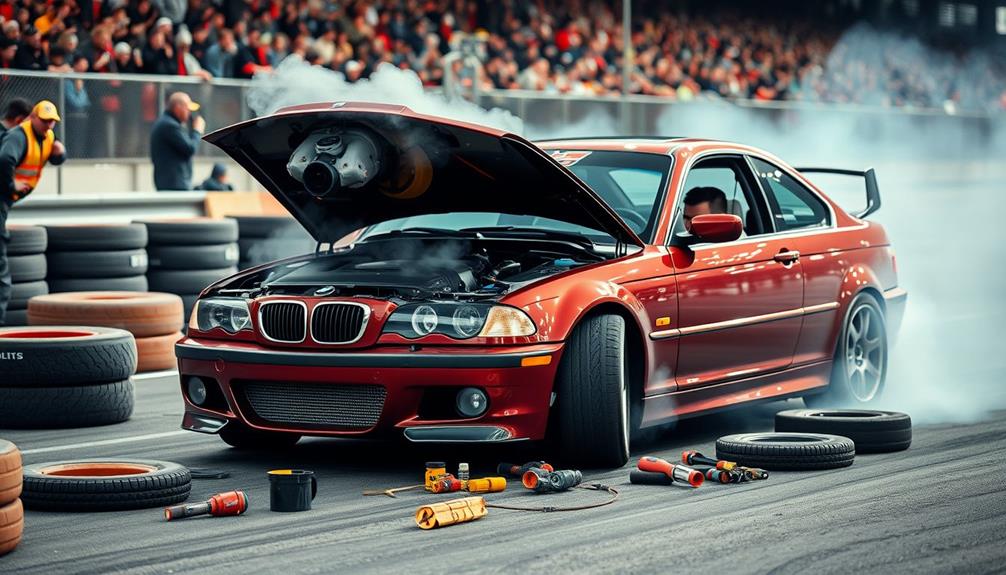
If you're noticing common overheating symptoms in your BMW E46, it's time to assess your cooling system.
Regular maintenance checks on components like the thermostat and water pump can prevent serious issues down the line.
Don't forget to bleed the system properly to keep coolant flowing smoothly and avoid overheating during your drift sessions.
Common Overheating Symptoms
When you're pushing your BMW E46 to its limits, overheating can become a serious concern. You need to be aware of common symptoms that indicate your cooling system is struggling. First, if you notice a rise in temperature on your gauge, it can signal that the thermostat is malfunctioning or that the water pump isn't circulating coolant effectively.
Continuous overheating might also suggest that your cooling system hasn't been properly bled, leading to insufficient coolant flow.
During drifting runs, where heat buildup occurs quickly, it's essential to monitor these symptoms closely. If your engine starts to lose power or you hear unusual noises, it might indicate overheating. Additionally, verify that your auxiliary fans are working correctly; stronger fans can greatly improve airflow through the radiator, aiding in temperature regulation.
To enhance your setup, consider drilling a 1/4 hole in the thermostat to maintain consistent coolant flow. Mixing 100% water with Redline Water Wetter can also boost cooling efficiency.
Cooling System Maintenance Tips
Maintaining your BMW E46's cooling system is essential for preventing overheating and guaranteeing peak performance, especially during drift sessions. If you notice continuous overheating, check the thermostat and water pump, as a malfunction in these components can disrupt coolant flow. Inspect these parts thoroughly to confirm they're functioning correctly.
It's important to bleed the cooling system properly to eliminate air pockets that can hinder coolant circulation, particularly during track use. An inadequate coolant flow can lead to severe engine damage, so don't overlook this step.
Additionally, consider using a mixture of 100% water and Redline Water Wetter for improved cooling efficiency under high-performance conditions.
Modifying your cooling system can also enhance its effectiveness. Installing a lower temperature thermostat and a high-performance Stewart water pump can greatly help during extended runs.
If overheating issues persist, check for airflow obstructions around your radiator and assess the condition of your auxiliary fans. Stronger fans can maintain ideal engine temperatures, especially during intense driving.
Keeping your cooling system in top shape will guarantee your E46 performs at its best on the track.
Weight Reduction Strategies

To enhance your BMW E46's drift performance, focusing on weight reduction is crucial. By shedding unnecessary weight, you can improve your power-to-weight ratio, leading to better handling and agility on the track.
Here are some effective weight reduction strategies to evaluate:
- Remove non-essential components: Take out rear seats, sound deadening materials, and interior trim for significant weight savings.
- Opt for lightweight alternatives: Swap heavy factory parts with carbon fiber or fiberglass body panels and race-spec mirrors.
- Invest in a racing battery: A lightweight lithium-ion battery can save several pounds, enhancing your car's responsiveness.
- Upgrade to an aftermarket exhaust: Replacing the stock exhaust system with a lighter option can reduce weight while improving exhaust flow and engine performance.
- Consider air conditioning removal: Ditching the air conditioning and unnecessary electronics can further optimize your vehicle's agility.
Implementing these weight reduction strategies won't only enhance your BMW E46's track performance but also make it more competitive in drift events.
Keep it light, and you'll enjoy the benefits on the track!
Interior Modifications for Drift

When tuning your BMW E46 for drifting, interior modifications play a vital role in enhancing performance.
Installing lightweight racing seats not only reduces weight but also improves your control behind the wheel.
Additionally, considering harness installation and dashboard removal can further optimize your setup for those high-speed drifts.
Lightweight Racing Seats
Lightweight racing seats are an important modification for any BMW E46 drifting enthusiast looking to enhance performance and control. By opting for seats from brands like Sparco or Recaro, you can greatly reduce your car's overall weight, which is essential for those drift runs.
Not only do these seats improve handling, but they also provide a snug fit that enhances your connection to the car.
When considering lightweight racing seats, keep these points in mind:
- Weight reduction: Lighter seats mean better performance.
- Custom mounting brackets: Guarantee a proper fit and increased driver safety.
- Integrated harness slots: Compatible with harnesses for better restraint during maneuvers.
- FIA-approved options: Key for competitive drifting and meeting safety standards.
- Padded options: Offer comfort for extended sessions while maintaining lightweight advantages.
Installing FIA-approved racing seats won't only help you stay compliant with regulations but also enhance your overall driving experience.
With the right setup, you'll notice improved control and comfort, allowing you to focus on mastering your drifting skills.
Harness Installation Tips
Upgrading to lightweight racing seats enhances your connection to the car, but securing yourself properly with a quality harness is just as important for drifting.
When you tackle harness installation in your BMW E46, focus on safety first. Opt for a 5-point harness for maximum support, as it offers better stability than a standard 3-point seatbelt.
Make sure to secure the harness to solid mount points on the chassis, using a harness bar or approved mounting locations. This prevents any unwanted movement during operation.
For the shoulder straps, maintain a correct angle between 0 to 20 degrees from horizontal to minimize the risk of spinal injury in an accident.
Accessibility is essential, so consider using quick-release hardware for your harness. This allows for swift egress in emergencies, enhancing your safety on the track.
Don't forget to perform regular inspections of the harness for wear and tear. Replace it every 2-3 years or after any incident, as the integrity of your harness is critical for your safety during drift events.
Dashboard Removal Techniques
Before diving into your BMW E46's interior modifications, you'll need to remove the dashboard effectively. Start by disconnecting the battery to guarantee your safety.
Once that's done, follow these steps for a smooth dashboard removal process:
- Locate and remove the screws and clips securing the dashboard, usually around the instrument cluster, air vents, and glove compartment.
- Use a trim removal tool to carefully pry off any plastic trim pieces. Remember, these can be fragile, so take your time.
- Disconnect all necessary electrical connectors for switches, lights, and airbag systems. This step is essential to avoid damaging any components.
- Keep an eye on the routing of cables and harnesses. Document their placement to help with reinstallation later.
- Once everything is disconnected and removed, gently lift the dashboard out of your E46.
Community Support and Resources

When immersing yourself in the world of BMW E46 tuning for drift, tapping into community support and resources can be invaluable. Engaging with online forums like Bimmerforums.com opens the door to a wealth of knowledge from experienced enthusiasts.
You'll find dedicated sections for technical discussions where you can seek guidance on suspension, drivetrain, and cooling modifications specific to drift tuning. As you share your build progress and challenges, you'll foster a supportive environment that encourages advice and inspiration.
This collective experience can help you avoid common pitfalls and refine your setup more efficiently. Additionally, the classifieds section allows you to buy, sell, or trade parts, which enhances resource availability for your tuning projects.
Regular updates and community events keep you informed about new techniques and products, providing opportunities for collaboration. By actively participating in these networks, you not only gain insights but also build friendships with fellow E46 enthusiasts, making your drift tuning journey even more rewarding.
Frequently Asked Questions
How to Set up a Drift Car?
To set up a drift car, you'll need to upgrade the suspension, install a welded differential, reinforce the subframe, optimize weight distribution, and enhance cooling. These modifications will improve your car's performance and handling considerably.
How to Program BMW E46 Key?
You might think programming your BMW E46 key's complicated, but it's simple! Just turn the ignition on, switch it off, insert the new key, and repeat within 30 seconds to program additional keys successfully.
What Is the Best BMW to Drift In?
If you're looking for the best BMW to drift in, the E46 3 Series is a fantastic choice. Its balanced chassis, rear-wheel drive, and aftermarket support make it a top contender for drifting enthusiasts.
Can an E46 Drift?
You might think an E46 can't drift, but it absolutely can! With the right modifications, like a welded diff and upgraded suspension, you'll enjoy controlled slides and thrilling drifts that make every drive exciting.
Conclusion
As you transform your BMW E46 into a drift machine, think of it as sculpting a masterpiece from raw marble. Each upgrade and modification sharpens its edge, turning your car into a symphony of power and precision. With the right tweaks, your ride will dance gracefully around corners, leaving a trail of smoke and adrenaline in its wake. Embrace the journey, lean into the community, and watch your BMW evolve into a fierce competitor on the track.
Alex is our go-to expert on performance tuning, with over a decade of experience in the automotive industry. His deep understanding of engine dynamics, exhaust systems, and performance software allows him to break down complex concepts into easy-to-follow guides. Whether you’re looking to boost horsepower or fine-tune your vehicle’s responsiveness, Alex’s insights will help you achieve peak performance.
-
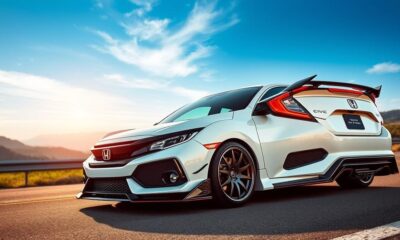
 Hybrid Tuning3 months ago
Hybrid Tuning3 months agoHonda Civic Hybrid Tuning: Unlocking Maximum Efficiency and Performance
-
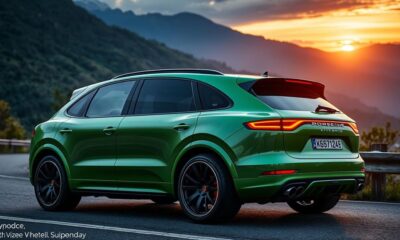
 Hybrid Tuning3 months ago
Hybrid Tuning3 months agoPorsche Cayenne E-Hybrid Tuning: Unleashing the Beast Within the Luxury SUV
-
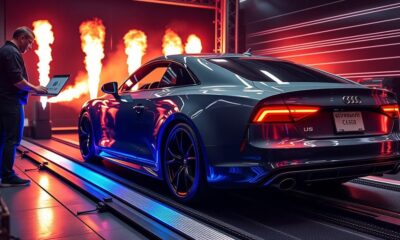
 Audi Tuning3 months ago
Audi Tuning3 months agoChip Tuning Audi: How to Unlock Extra Power Instantly
-

 Automotive DIY and Professional Guides3 months ago
Automotive DIY and Professional Guides3 months agoWhen Is Car Tuning Required? Signs It’s Time for an Upgrade
-

 Audi Tuning3 months ago
Audi Tuning3 months agoAudi A3 Tuning: Elevate Your Compact Car’s Performance
-

 Hybrid Tuning3 months ago
Hybrid Tuning3 months agoInfiniti Q50 Hybrid Chip Tuning: Enhance Performance With Precision Tuning
-

 Hybrid Tuning3 months ago
Hybrid Tuning3 months agoNissan Altima Hybrid Tuning: Upgrade Your Sedan for Maximum Efficiency
-

 Hybrid Tuning3 months ago
Hybrid Tuning3 months agoCube Reaction Hybrid Tuning: Get the Most Out of Your Electric Bike











